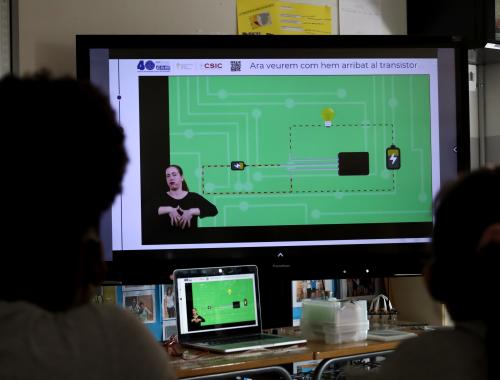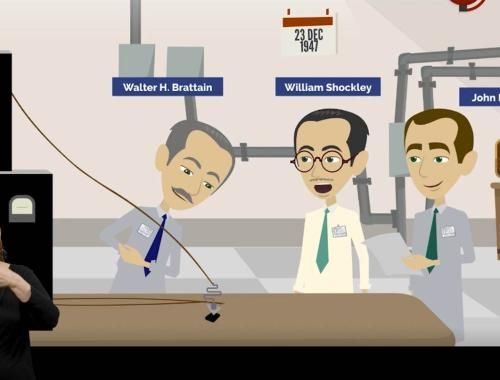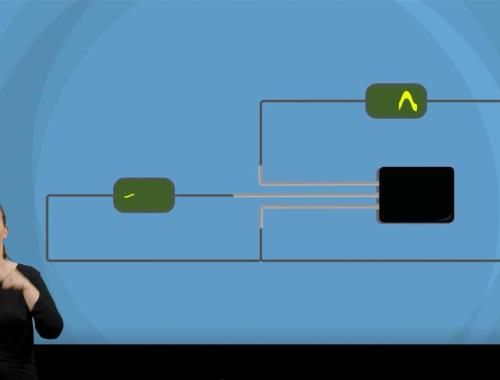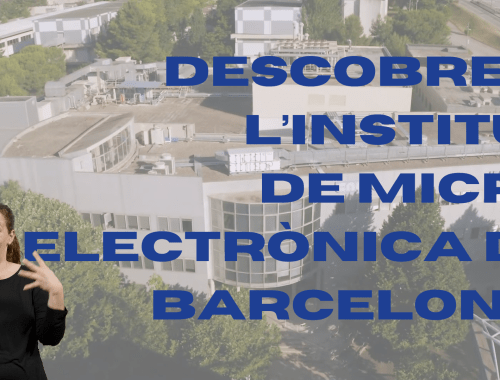The IMB-CNM joins the Catalan Sign Language Day with accessible audiovisual materials and a commitment to inclusive outreach
The IMB-CNM celebrates the commemoration of the approval by law of the LSC with new signed audiovisual materials: a corporate video on the center's research and an informative one on the history of the transistor, to contribute to an open and more accessible science for everyone
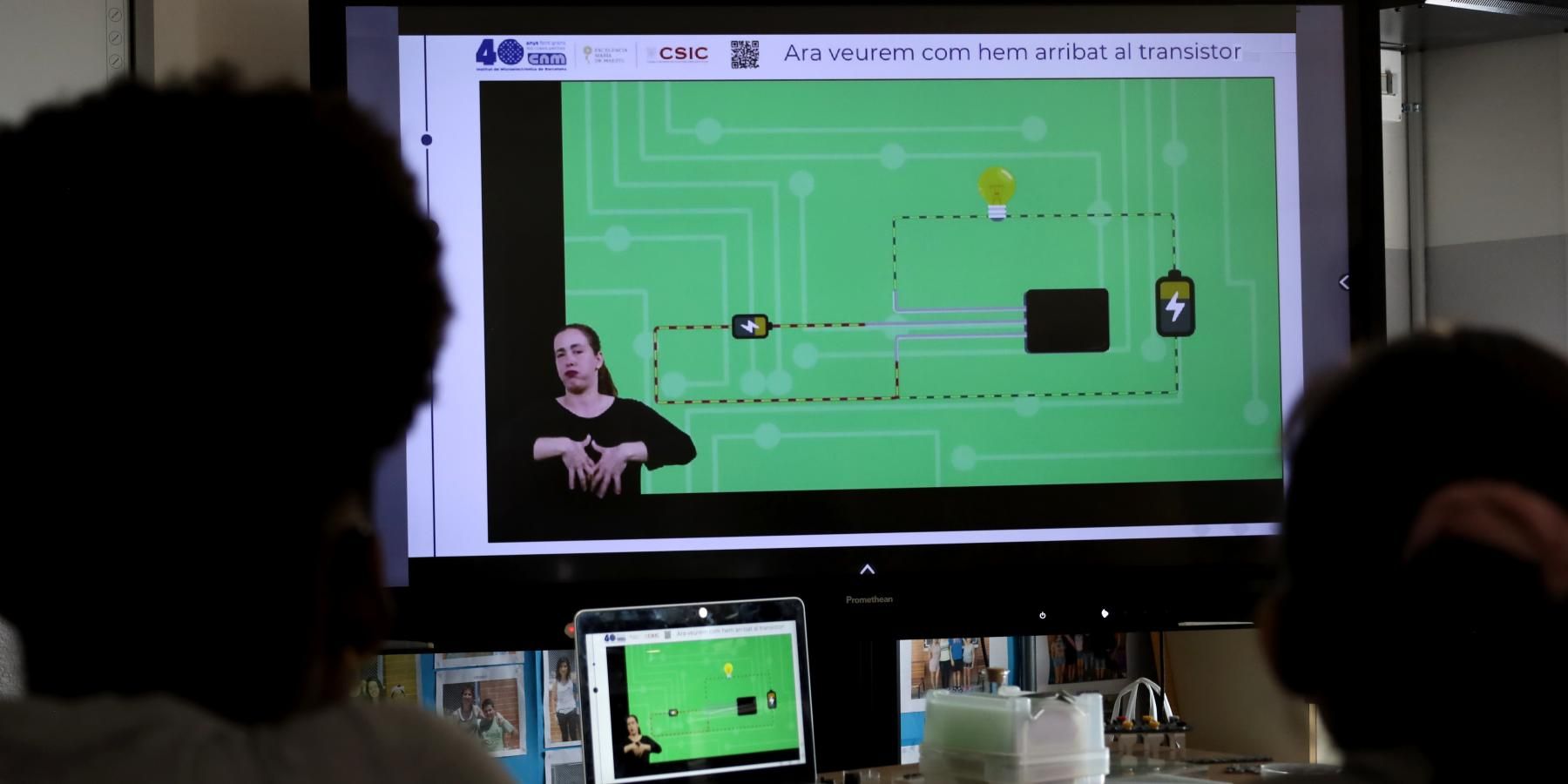
The Institute of Microelectronics of Barcelona (IMB-CNM-CSIC) joins the Catalan Sign Language Day with the publication of two signed videos to promote an open science and provide more accessible content on miniaturized electronics. Catalan Sign Language (LSC) is the natural language of deaf and deafblind signers in Catalonia and on June 3, 2010 was recognized as an official language of the territory.
Today, the IMB-CNM publishes two videos with LSC interpretation in its corporate broadcasting channels. On the one hand, it is the institutional video, which serves as an introduction to the center and its research activity, and, on the other hand, an informative video on the history of the transistor and microelectronics, which contextualizes the origin of the first integrated circuit and the evolution of electronic devices. This action responds to an institutional will to make scientific and technological knowledge accessible and contribute to reduce the barriers to access to information in research perpetuated for the group of deaf people; as well as to guarantee the right to use and promote the LSC in the field of science and technology.
“The project draws on the awareness and efforts being made in other sign languages, such as English or German, to reach and generate interest and vocations in scientific and technical disciplines for the group,” explains Gemma Rius.
These two materials have been signed in LSC in the framework of the project Difondre les STEM en Llengua de Signes Catalana, coordinated by IMB-CNM-CSIC researcher Gemma Rius Suñé. The initiative is supported by the Fundació Catalana per a la Recerca i la Innovació (FCRi) 2025. The signing has been carried out by the Audiovisual Department of the Federació de Persones Sordes de Catalunya (FESOCA), with the collaboration and advice of researcher Aida Villaécija from the TRANSMEDIA Catalonia (UAB) and the Xarxa d’Innovació en Accessibilitat de Catalunya (Red AccessCat), led by Anna Matamala.
“One of the important aspects is to identify terminology related to microelectronics, as well as in emerging technologies such as quantum, for which signs are not yet available and to propose a new one. This will be possible thanks to project collaborators Marc Tapia, FESOCA's Training member, and LSC expert Villaécija, from UAB,” adds Rius.
A series of dissemination and participatory outreach actions have been scheduled, including guided tours and educational talks, for example, during the Science Week or the European Researchers' Night.
During this year, new videos on microelectronic manufacturing technologies and processes are expected to be published and signed, within the project “CHIPS: A journey through the integrated circuit” (FCT-23-19658), coordinated by Esteve Amat Bertran, researcher at IMB-CNM-CSIC, and with the collaboration of the Fundación Española para la Ciencia y la Tecnología - Ministry of Science, Innovation and Universities (FECYT).
Workshop with deaf students
Within the framework of both projects, the IMB-CNM held its first workshop on May 27th at the Josep Pla Special Education Center (CPE) in Barcelona, which only welcomes deaf students. This activity, aimed at students in 2nd and 3rd ESO of the center, lasted two hours and covered basic concepts of microelectronics, such as the transistor and chips. It is planned to repeat the workshop with new students, also adapted to different levels.
In this edition participated the same Rius, Núria Barrera Gutiérrez, Natalia Bermejo Gijón-Bonales and Sabela Rey Cao; and it was possible thanks to the signing and support of the teachers of the CPE Josep Pla, specifically, Laura Noelia Madrid López and Marga Cirera Molera.
A language for communication
June 3 is the date on which the Parliament of Catalonia approved Law 17/2010, which recognizes LSC as one of the official languages of Catalonia. The origin of LSC can be traced back to the creation on February 4, 1800 of the first school for deaf people in Barcelona, that is, 225 years ago. Since then it has been evolving and, above all, growing until today. Catalan Sign Language is the natural language of most of the deaf people living in Catalonia.
It is a natural language of gestural and visual modality used by the group of signers as a linguistic system of social and cultural communication. Like other sign languages, it fulfills all possible communicative functions and, like all living languages, it has certain characteristics that distinguish it.
It is estimated that there are more than 300 different sign languages in the world. They are usually identified with acronyms, so the Catalan Sign Language is usually called LSC, the Spanish as LSE, the French as LSF, the American as ASL, and so on. In Spain there are only two official languages, Spanish (LSE) and Catalan (LSC). In Catalonia, it is estimated that there are about 36,000 deaf people and about 25,000 signers.





